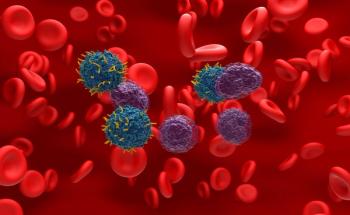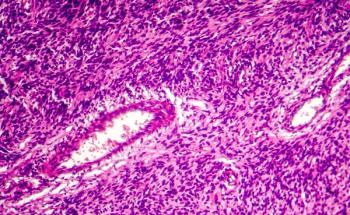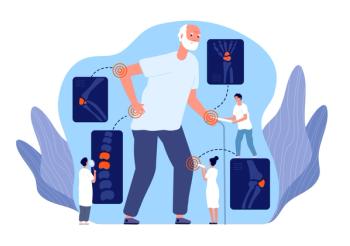
AI Identifies Possible New Therapy for IPF
Key Takeaways
- UNAGI, a deep generative neural network, tracks IPF progression and identifies potential therapies by analyzing cell types and disease-related genes.
- The model autonomously learns and refines itself, linking disease insights with therapeutic options by querying drug databases.
A deep learning generative model is capable of autonomously learning about idiopathic pulmonary fibrosis.
A novel artificial intelligence (AI) neural network can track disease progression in idiopathic pulmonary fibrosis (IPF) and identify potential therapies for the disease. The model, developed by an international team of investigators, was
The researchers behind the new AI system explained IPF is a good candidate for this type of technology, since existing therapies can only slow down—not cure—the disease. IPF is also
The authors of the new study developed a deep generative neural network, which they called UNAGI.1 The system has the ability to differentiate between cell types, identify genes related to disease progression, and pinpoint relevant regulatory networks. UNAGI can then cross-reference that data with databases of existing therapies.
“The model looks for regulation—what characterizes and regulates changes—and then, using known drug databases, also suggests treatments,” Naftali Kaminski, MD, one of the study’s authors, said
Kaminski and colleagues from KU Leuven, in Belgium, had previously worked together to develop a means to track disease IPF progression from a single sample.1 That breakthrough was possible because the distribution of IPF is variable within the lungs. Kaminski and colleagues realized that comparing samples collected during lung transplant operations would allow them to analyze different stages of the disease without the need for repeated follow-up with the same patient.
Kaminski said that work was fruitful from a research standpoint, but they realized that AI would allow them to glean even deeper insights.3
To help develop UNAGI, the researchers brought in Jun Ding, PhD, a computational biology specialist at the McGill University School of Medicine. Together, they used sequencing data from 230,000 cells to develop the AI model.
Ding said UNAGI was designed to be disease-informed. Rather than being a generic model of disease, UNAGI studies genes and regulatory networks specifically associated with IPF, and then utilizes that data to refine itself. One of its advantages, the researchers explained, is that it can largely learn autonomously, without the need for constant manual intervention on the part of human researchers.
“The model evolves to understand more and more about the disease,” Ding said in the press release.3 “It’s a bidirectional exchange of information.”
What makes the model particularly exciting for Kaminski and Ding is that it is designed not only to help investigators better understand the disease, but also to link those insights with potential therapeutic remedies. UNAGI can leverage its insights into disease progression to query a database of thousands of drugs with known mechanisms of action. That capability led it to identify 8 existing therapies the model said might be useful for IPF.1
Among them were a pair of histone deacetylase (HDAC) inhibitors, apicidin and belinostat. The former has been studied as a potential pulmonary fibrosis therapy, but Kaminski and colleagues said such research has not progressed beyond the preclinical stage due to safety concerns. Belinostat has been approved as a cancer therapy and is being sold under the brand name Beleodaq, but it has not been studied in IPF.
However, Kaminski and colleagues said 1 existing therapy was particularly intriguing, the calcium channel blocker nifedipine. The therapy is widely used to treat hypertension and has a good safety profile, they noted. However, despite some
Kaminski and colleagues treated human lung tissue samples with a model of IPF to see what effect nifedipine might have. As UNAGI predicted, the therapy appeared to block scar tissue from forming.
While it is too early to know whether nifedipine will prove to be a meaningful therapy for IPF, Kaminski said their findings show that UNAGI can be a useful tool to direct future research.
“UNAGI is hitting pathways we did not think about before,” he said.
References
1. Zheng Y, Schupp JC, Adams T, et al. A deep generative model for deciphering cellular dynamics and in silico drug discovery in complex diseases. Nat Biomed Eng. Published online June 20, 2025. doi:10.1038/s41551-025-01423-7
2. Selman M, Buendia-Roldan I, Pardo A. Decoding the complexity: mechanistic insights into comorbidities in idiopathic pulmonary fibrosis. Eur Respir J. 2025;65(5):2402418. doi:10.1183/13993003.02418-2024
3. AI helps researchers understand lung disease and proposes treatment. News release. Yale School of Medicine. June 20, 2025. Accessed June 27, 2025.
4. Mukherjee S, Ayaub EA, Murphy J, et al. Disruption of calcium signaling in fibroblasts and attenuation of bleomycin-induced fibrosis by nifedipine. Am J Respir Cell Mol Biol. 2015;53(4):450-458. doi:10.1165/rcmb.2015-0009OC
Newsletter
Stay ahead of policy, cost, and value—subscribe to AJMC for expert insights at the intersection of clinical care and health economics.














































